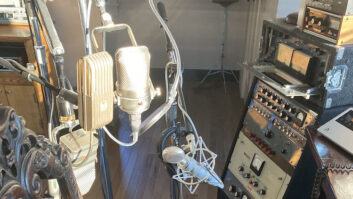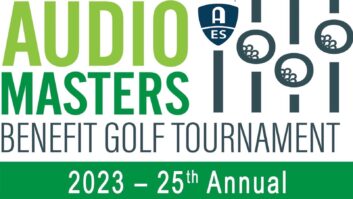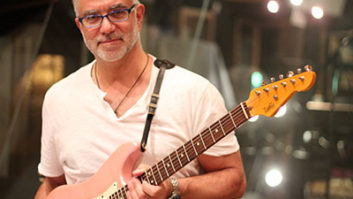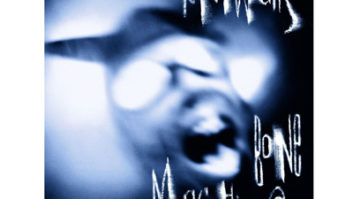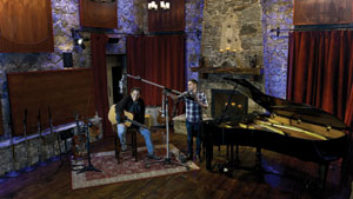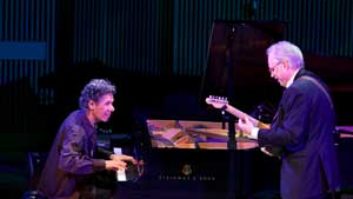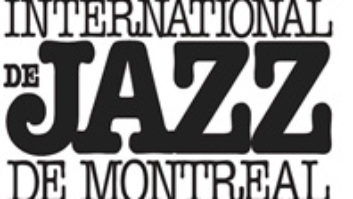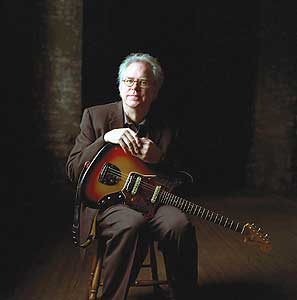
It’s hard to believe, but when I reach the extraordinarily prolific master guitarist Bill Frisell at an apartment he’s renting in the beautiful, ancient town of Orvieto, Italy, two days before Christmas, he hasn’t been working feverishly every second since he arrived in Italy nearly a month ago, and he doesn’t have five projects in different stages of completion. Okay, after New Year’s is a different story. But right now he’s kicking back, relaxing, writing some music at his leisure and anticipating just a single gig in Italy with his “mentor and hero,” jazz guitar great Jim Hall.
Frisell and I have three projects to talk about, however: His exceptional recent album on Nonesuch, Disfarmer, which may be his strongest work yet in the Americana-folk-jazz vein he has mined so successfully from time to time (amidst countless other disparate projects); a superb DVD shot in 2004 (but released recently) called Solos; and finalmente, as they’d say in Orvieto, a DVD of three Buster Keaton silent shorts for which Frisell’s mid-’90s trio supplied the soundtrack — the music came out on CD in 1995, but not the films-with-music. So all in all, it’s quite a bonanza for Frisell fans.
Disfarmer, was inspired by the works of Depression-era photographer Mike Disfarmer” />
Bill Frisell’s latest album, Disfarmer, was inspired by the works of Depression-era photographer Mike Disfarmer
Actually, Disfarmer has a slight connection to the Keaton project in the sense that it is music inspired by visuals (in part): Mike Disfarmer (1884-1959) was a photographer who captured the plain folks who lived in his community of Heber Springs, Ark., from the Depression era into the 1950s. Disfarmer was an odd duck: His actual last name was Myers, but he chose “Disfarmer” as a sort of dig against the principal livelihood of the people he lived around. And though one might think a portrait photographer would need to be a social fellow to loosen up his subjects, Disfarmer was famously cold, aloof, even misanthropic — he apparently made many of the people he photographed quite uncomfortable, yet they were fascinated by him, and he did do outstanding work. Rediscovered in the ’70s, when many new negatives of his work came to light, Disfarmer’s work is now shown in museums around the world.
Frisell’s Disfarmer was inspired by the portraits the photographer took and by Disfarmer’s “bizarre life,” as the guitarist puts it in the liner notes to the CD. Early on, Frisell and his wife went on a driving trip across the South to Heber Springs so he could “smell the air, talk to some people, taste the food, so the music wouldn’t be coming only from what I had seen or read in a book.” (It was an exhibit of Disfarmer’s photos at the Wexner Center of the Arts in Columbus, Ohio, that provided the original impetus for Frisell to musically explore Disfarmer’s work and life.) The setting and subject informed the style of music that Frisell composed for the project — this is rural America in the first half of the 20th century — so he wrote a number of pieces and then brought in two of his favorite collaborators: violinist Jenny Scheinman and steel guitar, Dobro and mandolin specialist Greg Leisz. The trio developed the music together and played it at the Wexner Center, “and when we started doing gigs,” Frisell says, “we actually had one not far from Heber Springs, and we got there early enough that the day of the gig Jenny and Greg and I went to the town and hung out for a while.”
Frisell says that even on conceptual pieces likes these, he rarely articulates his intentions. “It’s mostly playing. I don’t give them much verbal information. The reason I love to play with them is because I can trust their instincts. We have this understanding where we don’t have to figure things out so I can write something on paper and then they bring so much to it — I’m counting on them to do something with whatever I present to them. After awhile, it’s become more and more blurred about what’s specified and what’s not. There are plenty of things that are written out, but the ideas are also a sort of springboard, so what is interesting is getting from one specific thing to another specific thing; finding our way from one place to another. You kind of know where you’re going, but you jump off into the unknown along the way.”
The Disfarmer CD comprises 26 mostly short tracks. “There are three or four themes throughout the whole album, and most of the music is generated from those few little melodies,” Frisell says. “So there are a lot of variations on those themes.” Additionally, there are instrumental versions of three cover tunes from the early days of country music: Arthur Crudup’s “That’s Alright, Mama,” and Hank Williams’ “Lovesick Blues” and “I Can’t Help It (If I’m Still In Love With You).” Frisell comments, “I used the excuse of thinking about what they might have been hearing on the radio [during Disfarmer’s lifetime].”
Sessions for Disfarmer took place in two different studios, three months apart for four days each time: at Avast Studio in Seattle (where Frisell lives) in February 2008, and Sound Emporium in Nashville in May of that year. Lee Townsend, who has produced most (but not all) of Frisell’s albums since the mid-’80s, was once again at the helm; Tucker Martine engineered and later mixed it in Fantasy Studios’ “D” room in Berkeley, Calif.
“When we did the initial set of sessions up in Seattle at Avast,” Townsend recalls, “they had performed the music a little on their trip, but we brought in [bassist] Victor Krauss for the recording, so that immediately changed things a bit. It was kind of an exploration — seeing how everything sounded not only with Victor, but which instrumentation would work best with each song. When we finished with that, we realized there were a few nuggets, but also some things we thought could be fleshed out better.
“There are a couple of different kinds of records that happen with Bill — ones where the material is kind of fleshed out in the studio and others where it’s a little more road-tested. This one was somewhere in between, but mostly the former. For the next set of sessions we did at Sound Emporium, we had the same instrumentation but a little more seasoning — the second time around everyone was way more comfortable with the material. We had Disfarmer photos taped up everywhere. It was a very cool vibe.”
Though Frisell and company will typically record live in the studio, usually laying down somewhere between two and eight takes per song, he and Townsend are certainly not averse to overdubbing; indeed, it’s part of how they achieve such interesting textural depth on some tunes. “I think the most tracks we had on any song on this album was about 32,” Townsend says. “It might have three guitar tracks — maybe an acoustic and two electrics, a loop [Frisell has long employed loops and other electronics as part of his guitar arsenal], a couple of Greg [Leisz], three tracks of two passes of Victor, a bunch of violins — it can add up.”
Martine says that he used basically the same miking schemes in Seattle and Nashville, including an RCA 77DX on the fiddle; a Royer 121 and a Shure SM57 on the pedal steel amp; an M49 on the Dobro; an RCA Varacoustic on mandolin; a Gefell M300 for Frisell’s acoustic guitar parts and KM84s on his amps; and for the stand-up bass, Martine says, “an RCA 44 by the F hole, a KM84 between the fingers and the bridge for articulation, and a Demeter DI.
“There was one song where I re-amped Jenny’s violin through a small amp cranked up loud for some extra grit,” Martine continues. “All of the reverb added during the mixdown was the great-sounding chambers at Fantasy. Also, I used a fairly quick delay from a PCM 41 on the pedal steel on a lot of songs, usually panned to the opposite side. It was [recorded to Pro Tools and] mixed to Studer A80 half-inch at 30 ips.”
The Films of Buster Keaton, Music by Bill Frisell DVD gives us a glimpse of Frisell 15 years ago, when he was in a trio with bassist Kermit Driscoll and drummer Joey Baron. It’s interesting to contrast the type of music Frisell wrote for these three shorts — The High Sign, One Week and Go West — with the more typical piano or organ or orchestra scores we usually associate with silent films. Baron’s drums and percussion provide much of the comic punctuation for pratfalls onscreen, but otherwise these are solid trio outings with Frisell’s musical personality shining brightly.
“What was so cool about the Buster Keaton thing,” Frisell says today, “was that I had no idea what I was doing and there were no rules and no one telling me what to do — it wasn’t like a Hollywood movie or something. It was the best way that could’ve happened: I was left to make every possible mistake, and in making those mistakes I think I learned a lot. I could try all these strange things, like having a ballad playing during a wild fight scene; I could try anything. It was a great way to get my feet wet.” Those Townsend-produced sessions were recorded at Mobius Music in San Francisco by Oliver DiCicco and mixed at Different Fur in S.F. by Judy Clapp.
And then there’s the Solos DVD, which is a fantastic introduction to Frisell’s artistry. It was shot up close and personal with multiple cameras in the abandoned-looking 19th-century Berkeley Church in Toronto, with no audience — just Frisell alone with a Telecaster, a couple of Fender amps and a few pedals, wending his way through a great selection of his original tunes from different eras: “Throughout” from his early ECM Records days, “Ron Carter” from Blues Dream, “Keep Your Eyes Open” from Nashville, “Boubacar” from Intercontinetals, and a few well-chosen covers, such as Dylan’s “Masters of War,” the traditional country-folk tunes “Shenandoah” and “Wildwood Flower,” and The Gershwins’ “My Man’s Gone Now.” It was artfully directed by Daniel Berman and co-produced by Berman, Lee Townsend and Paul McNulty. “That was a great old church,” Frisell comments. “I must admit, even after all these years, playing by myself is sort of intimidating, but that turned out nicely.” The DVD also includes informative interview segments with Frisell.
But wait, there’s more! Upon returning to the U.S. from Italy, Frisell was scheduled to record a guitar-stravaganza in Nashville with Buddy Miller, Marc Ribot and Greg Leisz (and a rhythm section and probably some singers), and then there’s a second Floratone album to be made with his collaborators in that lineup — Martine, Townsend and Matt Chamberlain — and a gig playing the Buster Keaton music live to film, and — well, let’s just say it was lucky I caught him during his break because there might not be another one for quite a while. Frisell wouldn’t have it any other way.
